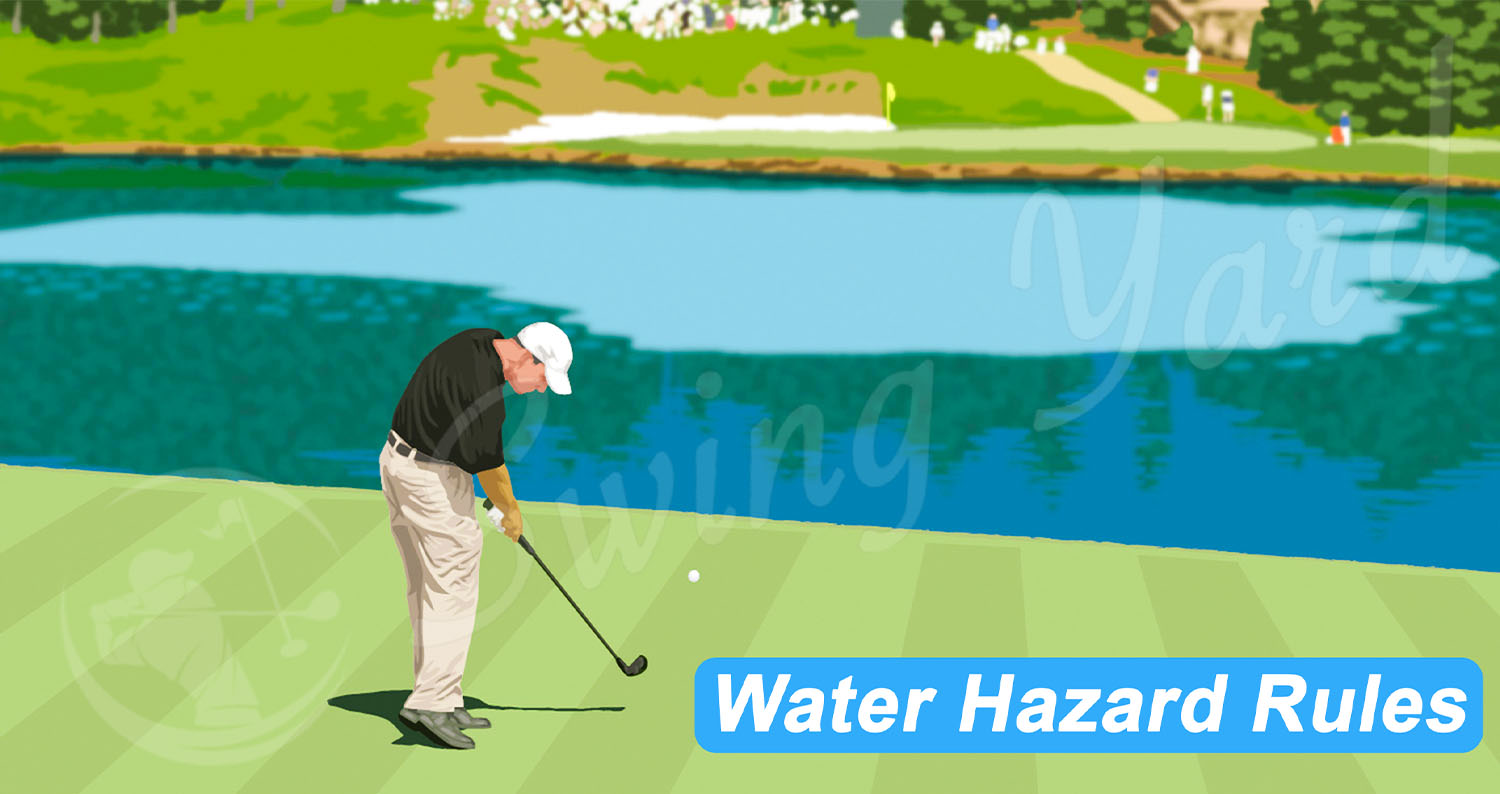
Water Hazard Golf Rules: Penalty Strokes and Your Relief Options
By Coach Erik Schjolberg – Feb 7, 2024
Contents
Key Takeaways – Golf Water Hazard Rules 2023
- Two types of hazards – lateral (red) and regular (yellow)
- There is a one stroke penalty for taking relief from a water hazard
- Two forms of relief from a regular hazard
- Four forms of relief from a lateral hazard
Few things annoy me more on a golf course than finding my ball in the lake. As frustrating as it is, it is not the end of the world, and you have additional options to escape the mess. In this post, I break down all the water hazard golf rules and explain the relief options you have available.
In addition, I’ll teach you about different types of water hazards and how you can identify them during your round.
Types Of Water Hazards: Yellow or Red Stakes
The USGA explains that golf courses feature regular and lateral water hazards, which offer different forms of relief to the affected golfer. No matter the type of hazard, you always have the option of playing your ball from the water. However, that decision may inflict catastrophic results on your scorecard.
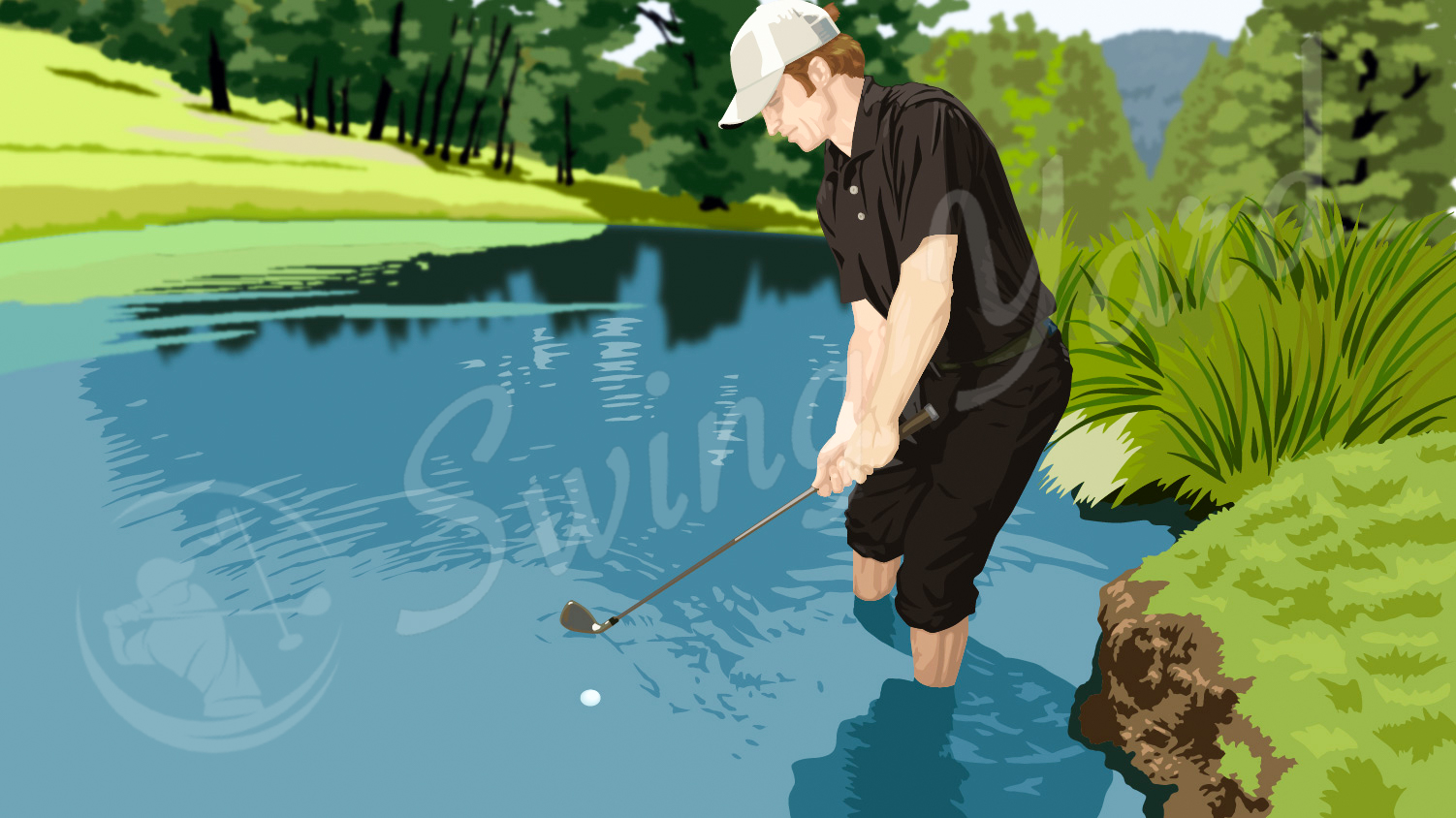

Regular Water Hazards
Regular or yellow water hazards are easily detected by the yellow stakes surrounding the pond. These water hazards typically require you to hit directly over them and are found in front of the tee box or guarding a green.
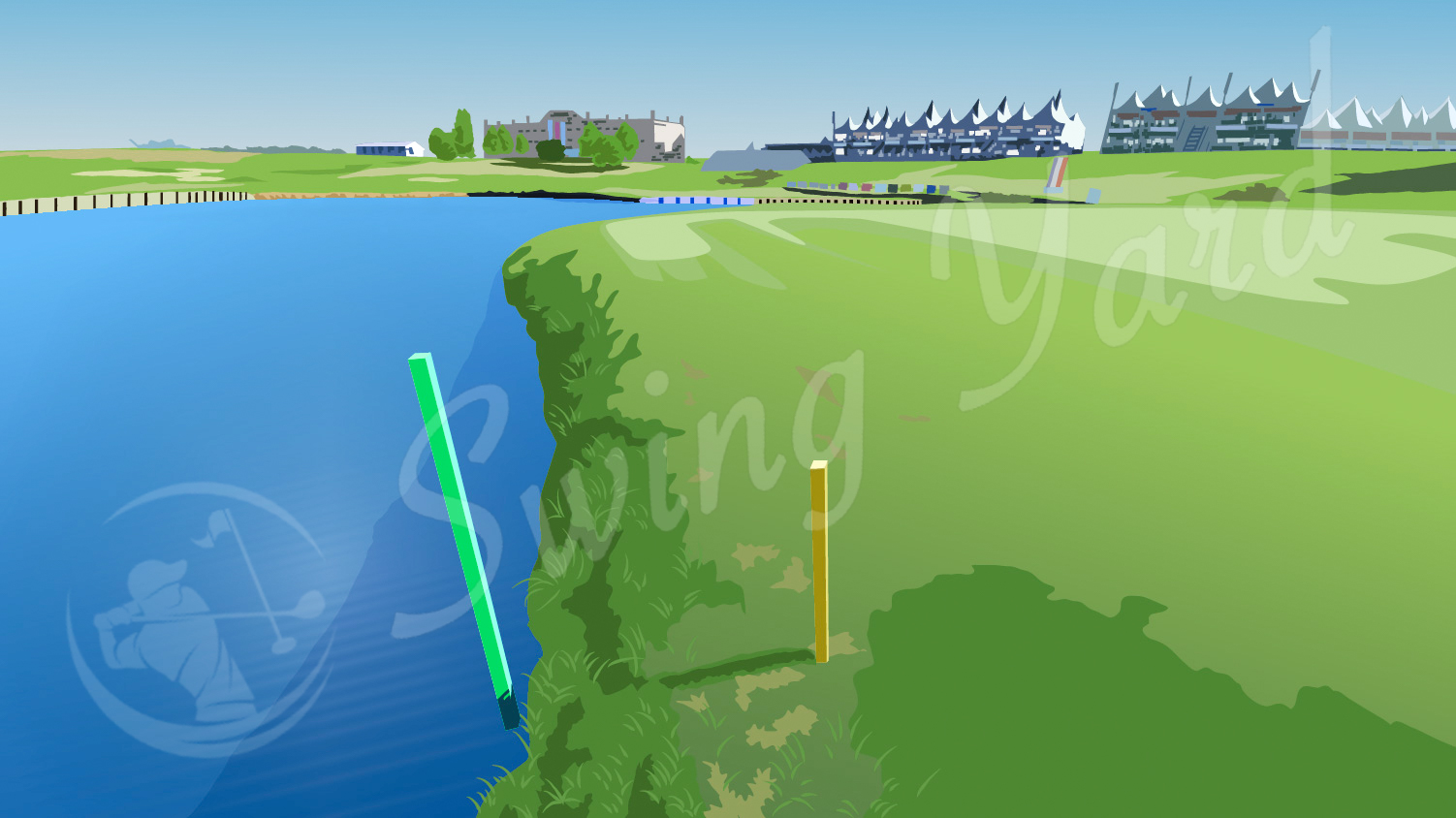

Relief Options
Besides playing your ball as it lies, you are left with two options when it crosses out of bounds into regular water hazards.
1. Drop Behind The Hazard
Your first option is to drop behind the hazard on the line that your golf ball last crossed the penalty area and accept a one-stroke penalty. As of September 2023, your ball is permitted to rest within one club length of the drop point, even if it’s nearer to the hole.
2. Stroke And Distance
The stroke and distance relief are effectively a reload. You drop another ball from where you struck your previous shot, accept a one-penalty stroke, and try again.
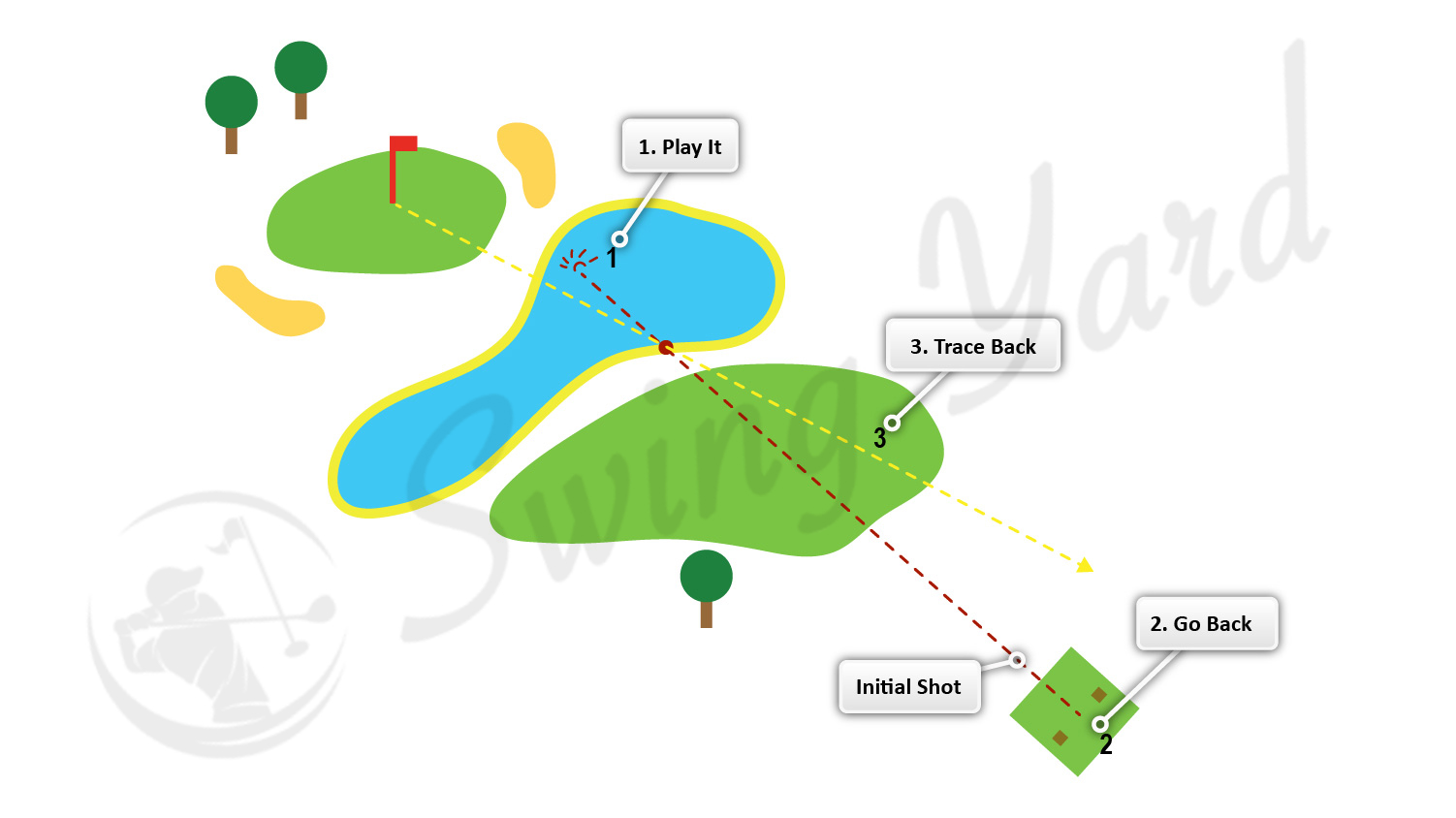

Lateral Water Hazards
A lateral water hazard color is marked red and typically runs down the side of a hole. Often your ball enters these hazards from the side, as they are not directly in your path.
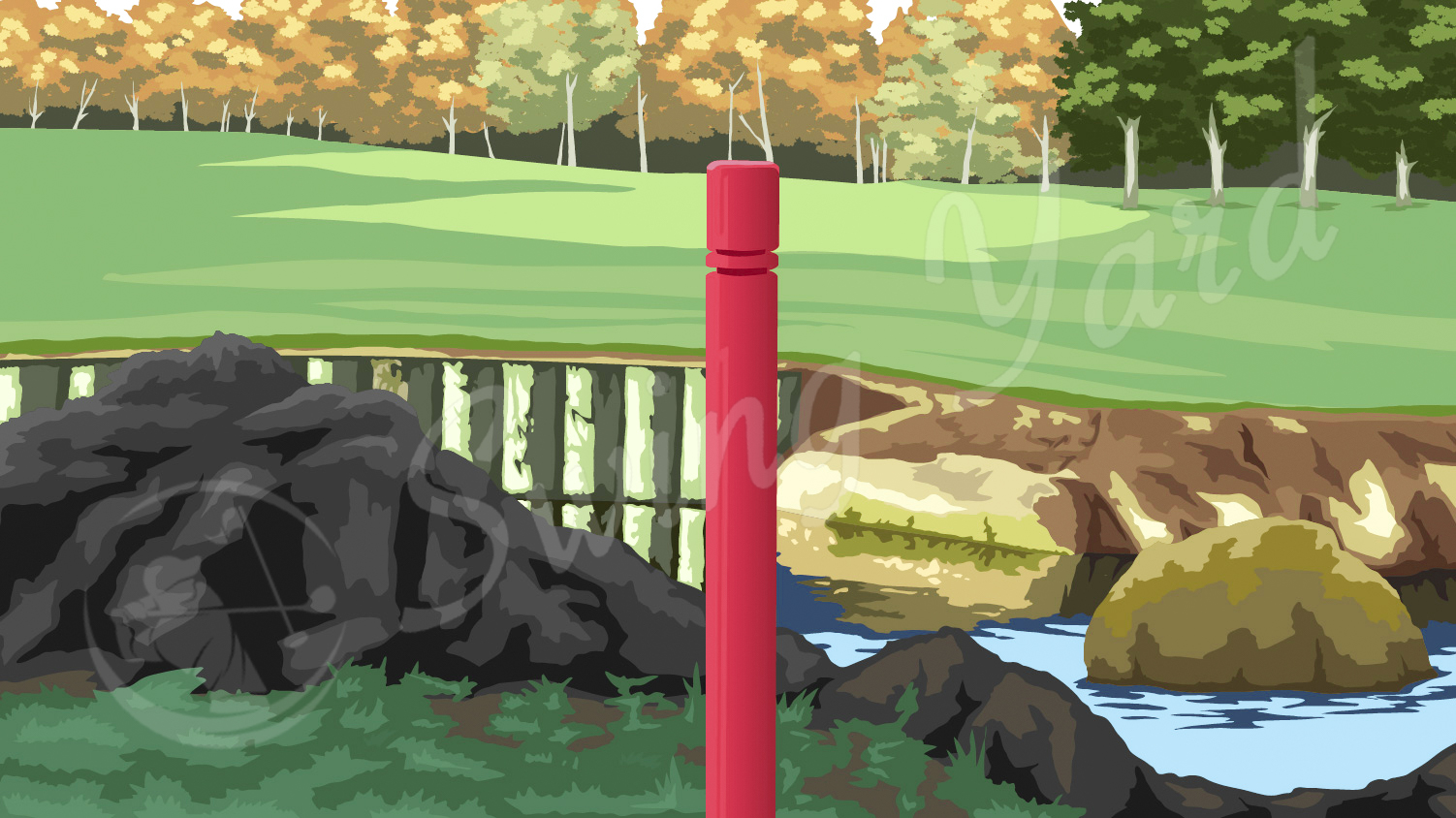

Relief Options
Red water hazard rules offer golfers four options to escape these water holes. The first two are to drop behind the hazard or the stroke and distance approach used in a yellow water hazard.
1. Drop At The Point Of Entry
Dropping within two club lengths from the point your ball last crossed into the hazard is a common way of relief. Instead of losing distance by laying your ball backward, one often drops their ball to the side of the water hazard, leaving them with a straight line to the green.
2. Drop On The Opposite Side
If there is no space for you to play within two club lengths at the point your ball crossed into the red water hazard, you can drop your ball on the other side.
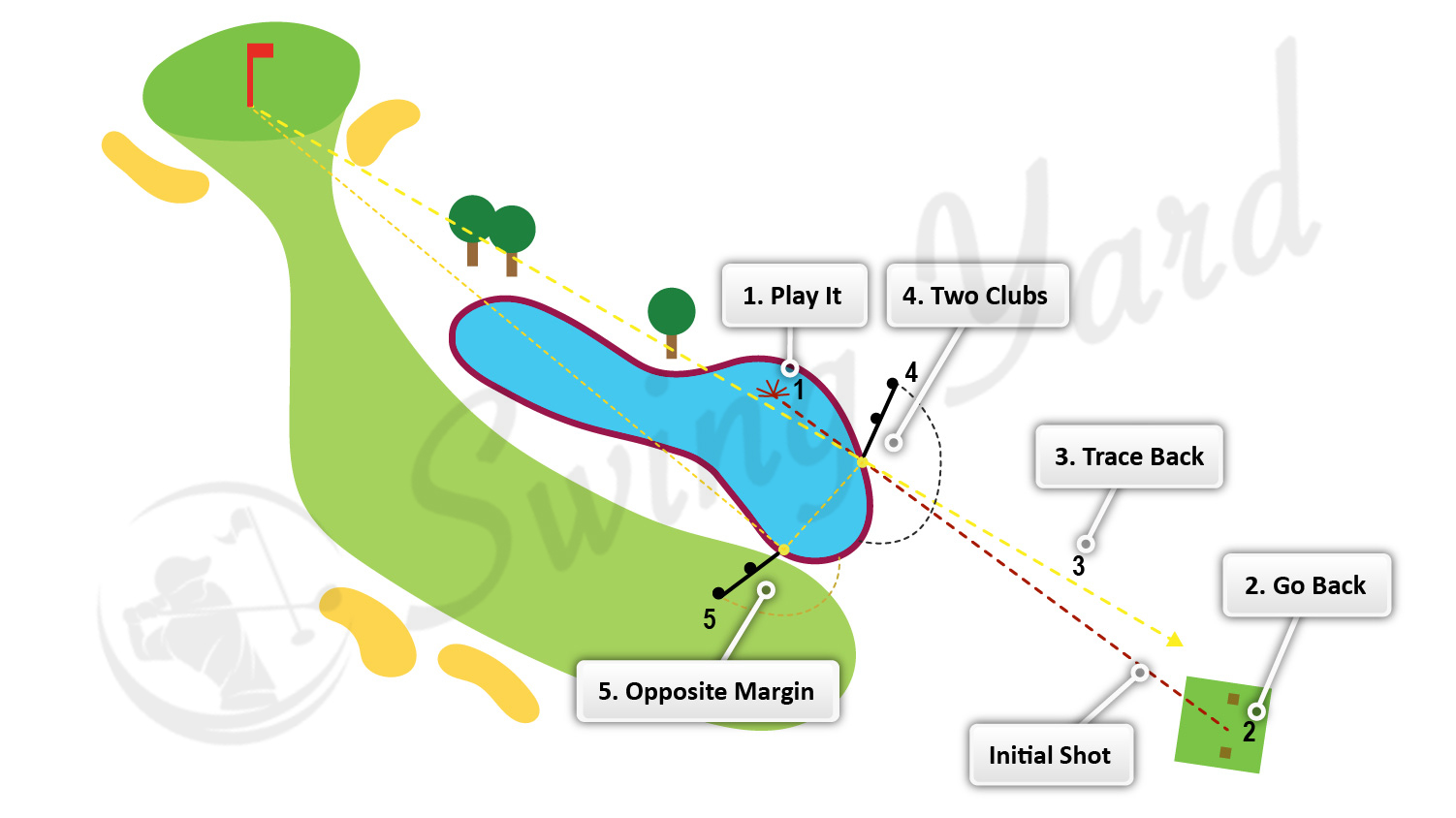

FAQ – Golf Penalty for Lost Ball in Water
Is a water hazard a 2-stroke penalty?
No, hitting your golf ball into a water hazard only warrants a 1-stroke penalty. That is why it makes more sense for the golfer to drop their ball on the ground and take the water hazard penalty rather than hitting and hoping for the best from the water hazard.
What is the worst water hazard penalty?
Although all options result in a one-stroke penalty, the outcome may be far worse if you attempt to play it as it lies from the penalty area. Believe it or not, one of the worst things you can do is to actually play with those waterlogged lake balls. Spoiler alert: its not worth it!
If the water hazard is frozen, is it still a penalty?
No, hitting your golf ball on a frozen water hazard is not a penalty. According to most winter golf rules, if you hit the ball into a frozen water hazard you can play it as it lies.
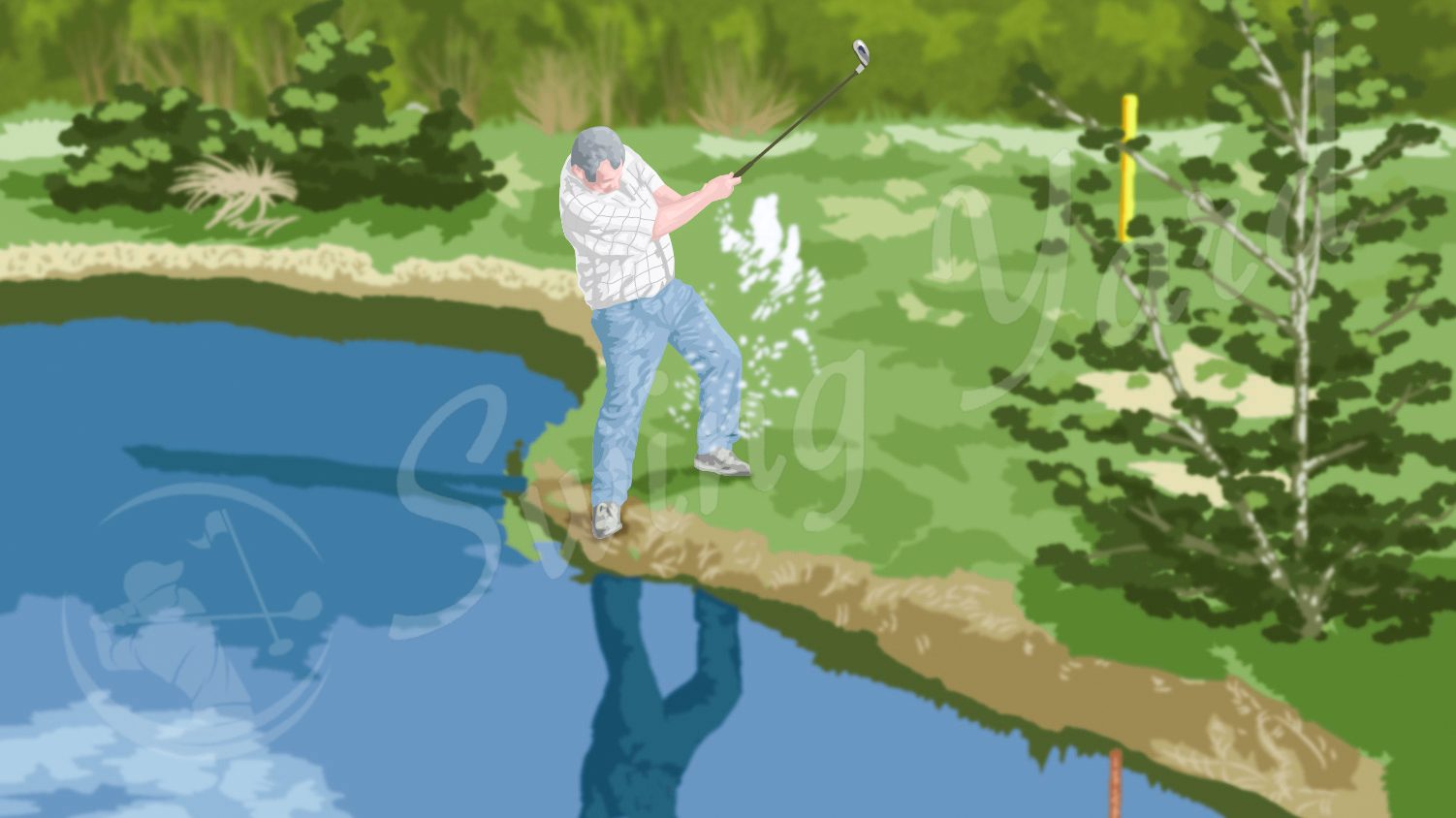

Final Thoughts – Playing Smart Golf Rules Water Hazard Options
Understanding the rules of golf water hazards helps you make the best decision for your situation by initiating damage control. Remember, you have two options of relief in a regular water hazard and four when dabbling with red water hazards.
And next time, don’t forget to bring a golf ball retriever!

